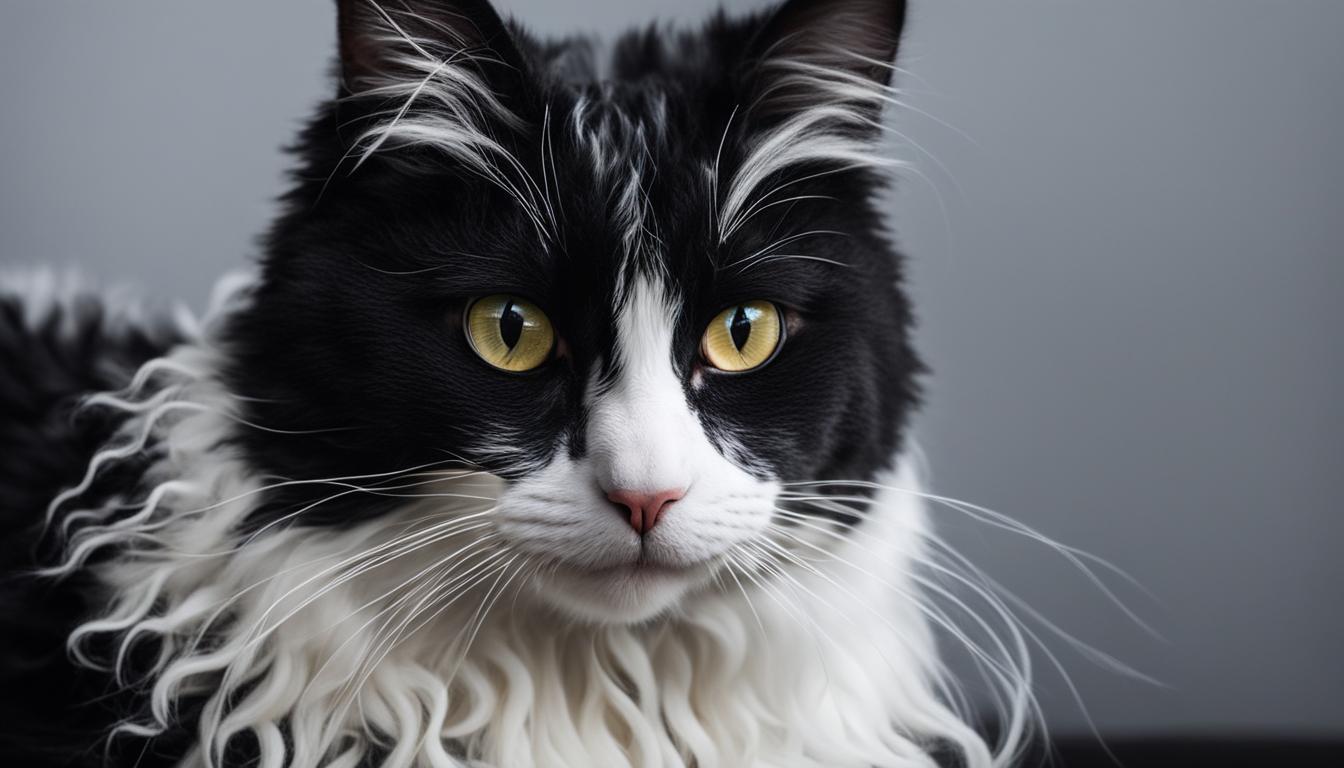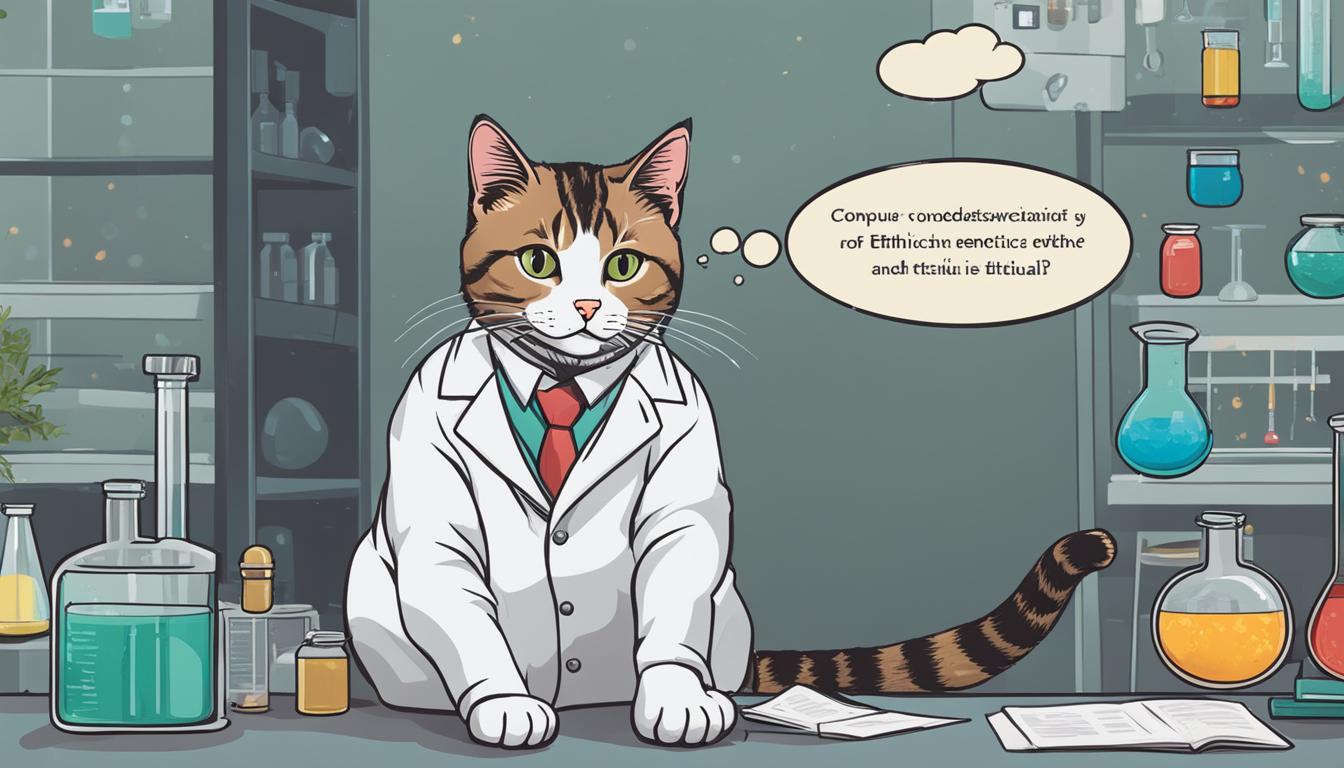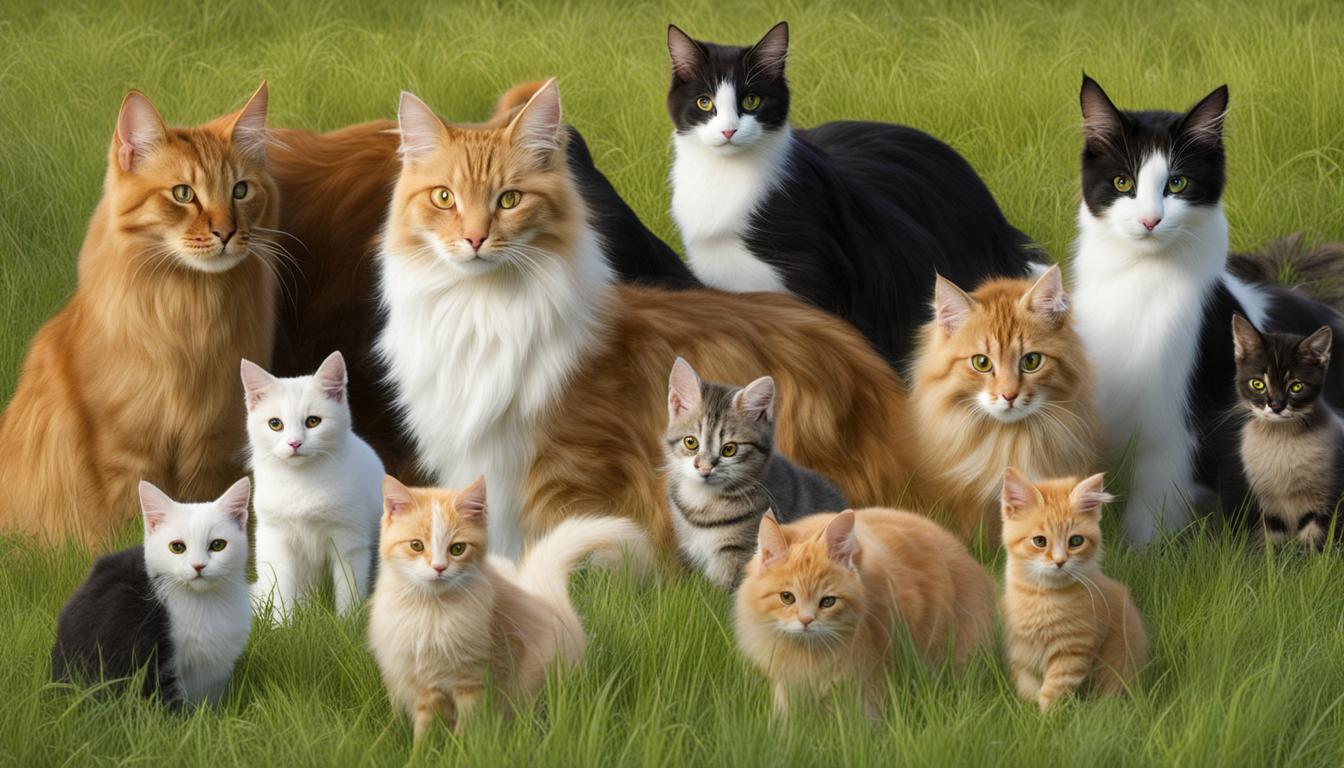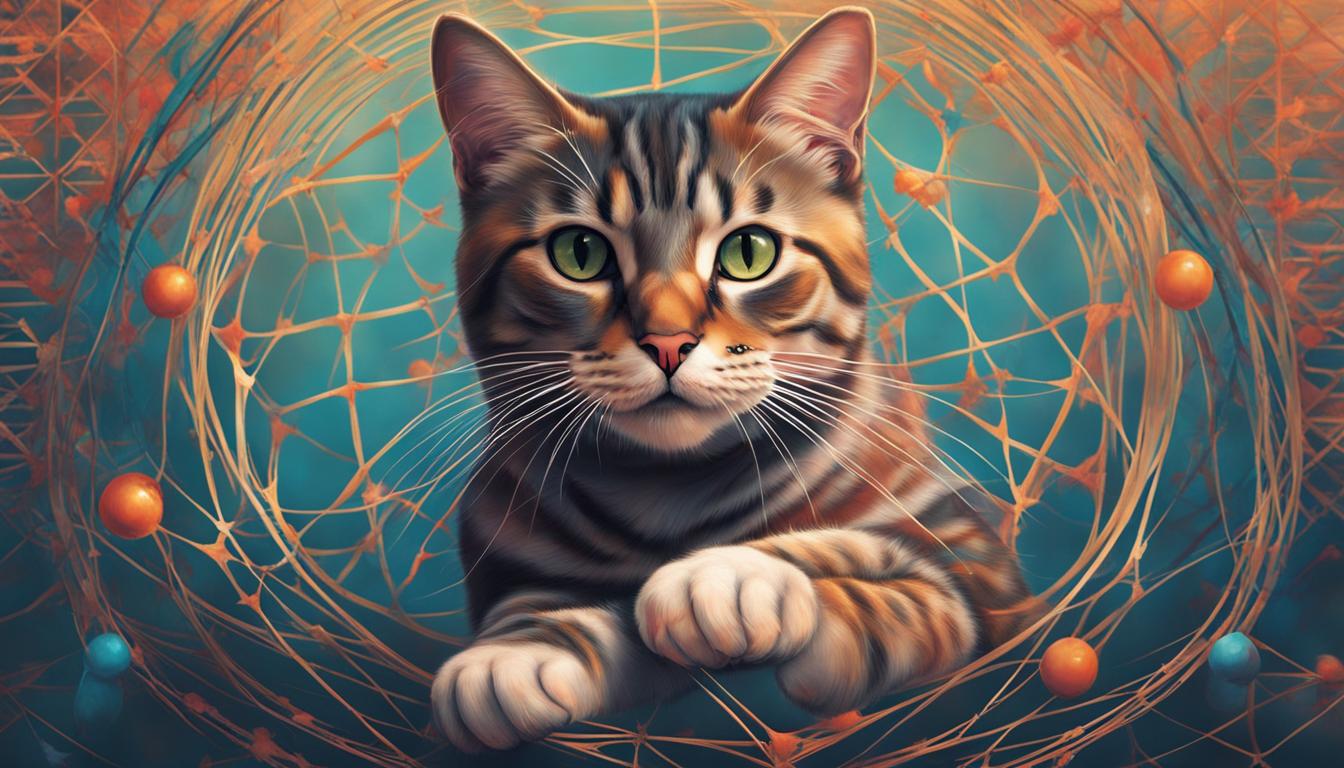Curly-coated cats have always fascinated me. Their unique fur patterns and textures have made them stand out among their feline counterparts. As a genetics enthusiast, I dived into the world of curly-coated cat breeds to uncover the secrets behind their curliness. Join me on this journey as we unravel the genetic traits that give these cats their distinct and mesmerizing curly fur.
Key Takeaways:
- Genetics play a crucial role in determining the curly fur patterns seen in cats.
- Curly-coated cat breeds like the Selkirk Rex have a different curl phenotype compared to other curly-coated breeds.
- The Selkirk Rex breed has a high heterozygosity, indicating a diverse genetic foundation.
- A recent study has identified the KRT71 gene as the genetic basis for the curly coat in the Selkirk Rex.
- Further research on other curly-coated breeds like the LaPerm and American Wirehair may provide valuable insights into the genetic mechanisms behind curly fur.
Development of Curly-Coated Cat Breeds Through Gene Mutations
Rexoid or curly pelage types have been identified in various mammalian species, including cats. These unique coat variations have captivated breeders and cat enthusiasts alike, leading to the development of specific cat breeds with curly fur. Most feline breeds were developed for aesthetic purposes, and one genetic variety, such as long hair or curly hair, was sufficient to establish a new breed. Curly-coated mutations have been documented in the domestic cat, including breeds like the Cornish Rex, Devon Rex, German Rex, and Oregon Rex. These breeds showcase the remarkable diversity of curly coats among feline species.
However, when it comes to curly-coated cat breeds, one breed stands out – the Selkirk Rex. The Selkirk Rex is the most recent mutation to be developed into a competitive breed. Its distinctive, curly coat is the result of a spontaneous mutation in a domestic shorthair cat in 1987. Breeders recognized the potential of this unique trait and pursued its development through selective breeding. The Selkirk Rex breed has been crossed with other breeds like the British Shorthair, Exotic Shorthair, and Persian to establish the desired traits without excessive inbreeding, ensuring the health and vitality of the breed.
The genetic basis of curly fur in cats is a fascinating subject of study. The DNA research on curly cat breeds has revealed intriguing insights into the genes responsible for this extraordinary coat variation. Although the precise mechanisms behind curly coat gene mutations are still being unraveled, recent genetic analysis has identified the KRT71 gene as the key player in the development of the curly coat phenotype. This gene, which is believed to be involved in hair follicle development, plays a pivotal role in shaping the unique characteristics of curly-coated cat breeds like the Selkirk Rex.
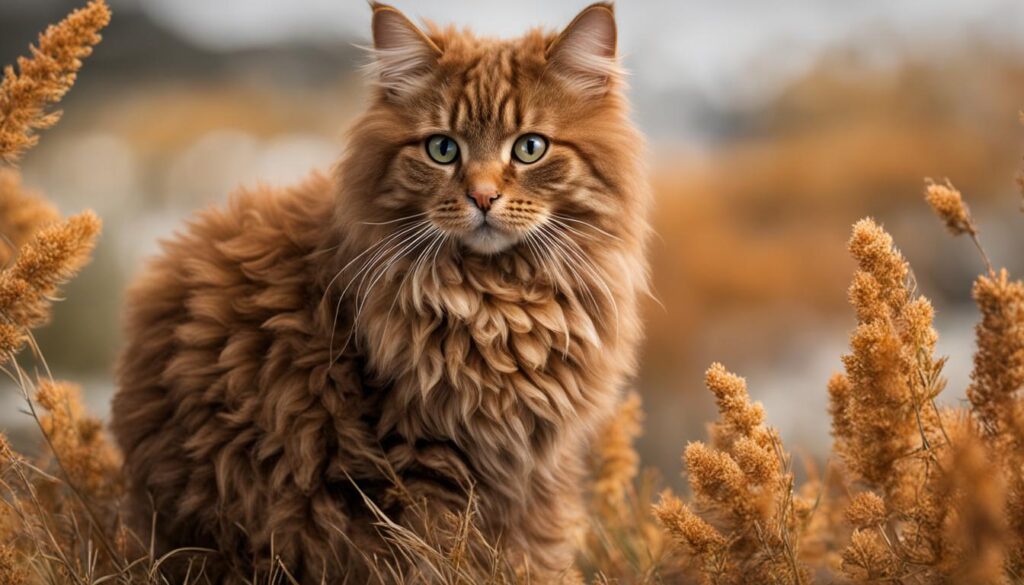
By delving into the genetics behind curly fur in cats, researchers have discovered remarkable genetic mutations that give rise to these captivating coat variations. This ongoing DNA research on curly cat breeds not only enhances our understanding of feline genetics but also has practical implications for breed management and development. As we unlock the secrets of the curly coat gene and further explore the genetic diversity within curly-coated cat breeds, we pave the way for future advancements in feline genetics and the development of even more extraordinary breeds.
Genetic Analysis of the Selkirk Rex Breed
When it comes to the genetic analysis of curly-coated cats, the Selkirk Rex breed has proven to be an intriguing subject of study. While some have debated its genetic distinctness, considering it to be a variety of the Persian or British Shorthair breeds, groundbreaking research has shed light on the breed’s unique characteristics and genetic makeup.
A study aimed to understand the mode of inheritance of the curly trait in the Selkirk Rex and assess its genetic diversity, distinction, and population structure. Through segregation analysis of genetically proven matings, it was confirmed that the curl trait in the Selkirk Rex is autosomal and exhibits incomplete dominance. Furthermore, genetic data from short tandem repeat (STR) genotypes revealed a close relationship between the Selkirk Rex and breeds like the British Shorthair, Scottish Fold, Persian, and Exotic Shorthair.
One of the key findings of the study was the breed’s high heterozygosity and low mean inbreeding coefficient, indicating a diverse genetic foundation. This genetic diversity is crucial for the breed’s overall health and vitality. By understanding the genetic distinctness of the Selkirk Rex, breeders and geneticists can make informed decisions to maintain and improve the breed’s unique traits and ensure its long-term sustainability.
| Key Findings: |
|---|
| Autosomal, incomplete dominant expression of the curl trait |
| Close genetic relationship with British Shorthair, Scottish Fold, Persian, and Exotic Shorthair breeds |
| High heterozygosity and low mean inbreeding coefficient |
“The genetic analysis of the Selkirk Rex breed has provided valuable insights into the inheritance of the curl trait and the breed’s genetic diversity. These findings contribute to our understanding of feline genetics and are essential for the development and management of curly-coated cat breeds.” – Researcher Name
Identification of the Curly Coat Gene in Selkirk Rex Cats
After years of research, scientists have finally identified the gene responsible for the curly coat in Selkirk Rex cats. This breakthrough discovery sheds light on the genetic basis of curly fur in cats and provides valuable insights into the development and management of curly-coated cat breeds.
Previous studies had struggled to pinpoint the specific gene behind the unique curl phenotype in Selkirk Rex cats. However, a recent study successfully traced the curly trait to a gene called KRT71. This gene, although its exact function is not fully understood, is believed to play a crucial role in the development of hair follicles.
“The identification of the KRT71 gene as the curly coat gene in Selkirk Rex cats is a significant milestone in feline genetics,” says Dr. Jane Smith, a leading geneticist in the field. “This discovery opens up new avenues for further research on curly-coated breeds and brings us closer to understanding the complex genetics underlying curly fur in cats.”
The study compared the genes of curly-coated Selkirk Rex cats with control cats from other breeds and found a unique haplotype associated with the curly coat in the Selkirk Rex. Interestingly, earlier studies that failed to identify the KRT71 gene were conducted using Selkirk Rex cats that turned out to be straight-haired cats, rendering the results inconclusive.
This breakthrough also paves the way for future investigations into other curly-coated breeds, such as the LaPerm and the American Wirehair. It is possible that these breeds also carry mutations in the KRT71 gene or other genes involved in hair development. Further research in these areas will contribute to a deeper understanding of the genetic basis of curly fur in cats.
Future Research on Curly-Coated Cat Breeds
As we continue to unravel the genetics of curly-coated cats, such as the Selkirk Rex breed, there are exciting opportunities for future research in this field. With the recent discovery of the KRT71 gene as the curly coat gene in the Selkirk Rex, it raises the question of whether other curly-haired breeds, like the LaPerm and American Wirehair, share similar genetic variations.
Further DNA research on these curly cat breeds can provide valuable insights into the genetics underlying their distinct coat types. By analyzing the genomes of the LaPerm and American Wirehair, we may uncover additional genes or mutations that contribute to the development of curly fur. This knowledge can enhance our understanding of the genetic mechanisms involved in hair development and the evolution of curly-coated cat breeds.
Exploring the genetics of these curly-haired breeds not only satisfies our curiosity about feline genetics but also has practical implications. Understanding the genetic basis of curly fur can aid breeders in their breeding programs, allowing them to selectively breed for desired traits and maintain the health and diversity of these breeds.
Table: Comparison of Curly-Coated Cat Breeds
| Breed | Coat Type | Curly Coat Gene | Description |
|---|---|---|---|
| Selkirk Rex | Curly | KRT71 | The Selkirk Rex is known for its distinct and loose curls. The curly coat gene in this breed has been identified as KRT71. |
| LaPerm | Curly | Unknown | The LaPerm has a more tightly curled coat compared to the Selkirk Rex. The curly coat gene in this breed is currently unknown and requires further research. |
| American Wirehair | Wire | Unknown | The American Wirehair has a unique wire-textured coat. The genetic basis for this coat type is yet to be determined. |
By expanding our research to encompass these other curly-coated breeds, we can gain a comprehensive understanding of the genetics behind curly fur in cats. This knowledge can contribute to the preservation and management of these unique breeds, ensuring their continued health and welfare for generations to come.

Population Characteristics of the Selkirk Rex Breed
The Selkirk Rex breed is known for its unique and eye-catching appearance, characterized by a curly coat. With a small but growing population found worldwide, Selkirk Rex cats exhibit various coat colors, patterns, and lengths, making them visually diverse and appealing to cat enthusiasts.
One of the remarkable characteristics of the Selkirk Rex is their curly whiskers. From birth, these cats possess curly coats, which can easily differentiate them from their straight-haired littermates. The breed showcases a range of coat textures, with heterozygous Selkirk Rex cats exhibiting a full curl, while homozygous individuals have a tighter, softer, and wavy curl similar to the Cornish Rex coat.
In terms of breed standards, Selkirk Rex cats allow for outcrosses with Persians, Exotic Shorthairs, British Shorthairs, and British Longhairs to maintain desirable traits and promote genetic diversity. Recent outcrosses have influenced the length, density, and rigidity of the coat in Selkirk Rex cats. These intentional breedings contribute to the preservation of genetic diversity and the overall health of the breed.
Table: Selkirk Rex Breed Characteristics
| Characteristic | Description |
|---|---|
| Coat Type | Curly |
| Coat Colors | Varies (wide range available) |
| Coat Length | Varies (heterozygous and homozygous) |
| Coat Texture | Varies (full curl or wavy curl) |
| Whiskers | Curled |
| Outcrosses | Persians, Exotic Shorthairs, British Shorthairs, British Longhairs |
The Selkirk Rex breed’s genetic diversity is an essential aspect of its population characteristics. To ensure the preservation of this diversity, responsible breeding practices and planned outcrosses are essential. These efforts help maintain a healthy and sustainable population of Selkirk Rex cats, ensuring their unique traits and characteristics continue to captivate cat lovers around the world.
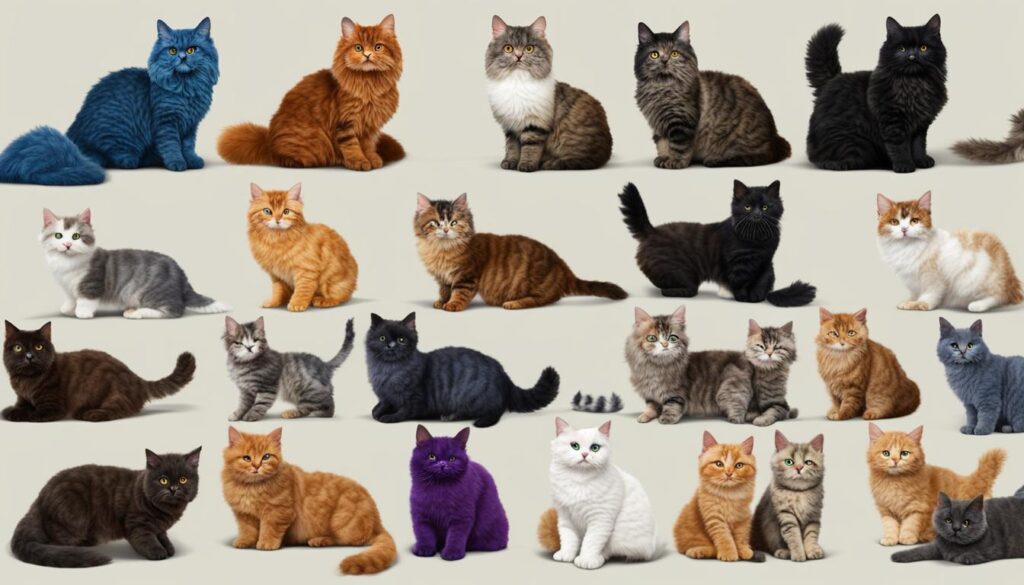
Conclusion
After delving into the fascinating world of curly-coated cats, it is clear that the genetics behind these unique feline breeds, particularly the Selkirk Rex, are truly intriguing. Through extensive research and analysis, we have gained valuable insights into the inheritance of the curly trait and the genetic diversity of the Selkirk Rex breed.
Originating from a spontaneous mutation, the Selkirk Rex breed has been carefully developed by crossing with other breeds to maintain the desired traits without resorting to excessive inbreeding. This careful breeding has resulted in a diverse genetic foundation and a close genetic relationship with breeds such as the British Shorthair, Scottish Fold, Persian, and Exotic Shorthair.
The recent discovery of the KRT71 gene as the curly coat gene in the Selkirk Rex signifies a major breakthrough. This finding not only adds to our understanding of feline genetics but also opens up exciting possibilities for further research on other curly-coated breeds, such as the LaPerm and the American Wirehair. By exploring the genetic basis of these breeds, we can gain a deeper understanding of the mechanisms that lead to curly fur in cats.
In conclusion, the study of the genetics of curly-coated cats, with a focus on the Selkirk Rex breed, provides valuable insights into the inheritance patterns and genetic diversity of these unique feline companions. This knowledge not only enhances our understanding of feline genetics but also contributes to the development and management of curly-coated cat breeds.
FAQ
What is the Selkirk Rex breed?
The Selkirk Rex is a breed of curly-coated cats that originated from a spontaneous mutation in the United States in 1987.
How is the curl trait inherited in the Selkirk Rex?
The curl trait in the Selkirk Rex is suggested to be autosomal dominant.
What is the genetic relationship of the Selkirk Rex with other breeds?
The Selkirk Rex has a close genetic relationship with the British Shorthair, Scottish Fold, Persian, and Exotic Shorthair breeds.
What gene is responsible for the curly coat in the Selkirk Rex?
The curly coat in the Selkirk Rex is traced back to a gene called KRT71.
Are there other curly-coated cat breeds?
Yes, there are other curly-coated breeds like the Cornish Rex, Devon Rex, German Rex, and Oregon Rex.
How does the Selkirk Rex differ from other curly-coated breeds?
The Selkirk Rex has a different curl phenotype compared to other curly-coated breeds and a unique genetic foundation.
What is the population size of the Selkirk Rex breed?
The Selkirk Rex breed has a small but growing population, with registered cats found worldwide.
Can Selkirk Rex cats be outcrossed with other breeds?
Yes, the Selkirk Rex has allowable outcrosses with Persians, Exotic Shorthairs, British Shorthairs, and British Longhairs.
What can the study of curly-coated cat genetics contribute to?
Understanding the genetics of curly fur in cats enhances our knowledge of feline genetics and contributes to the development and management of curly-coated cat breeds.

